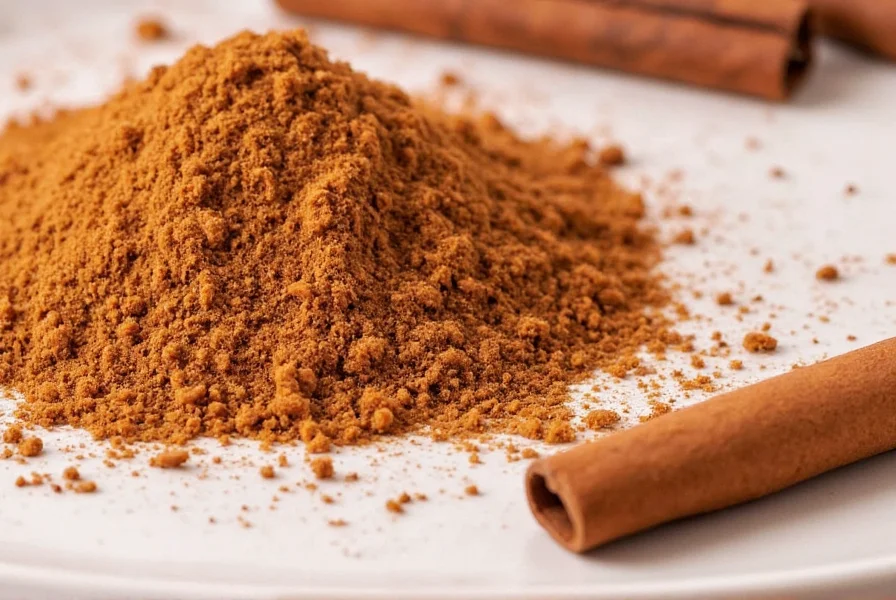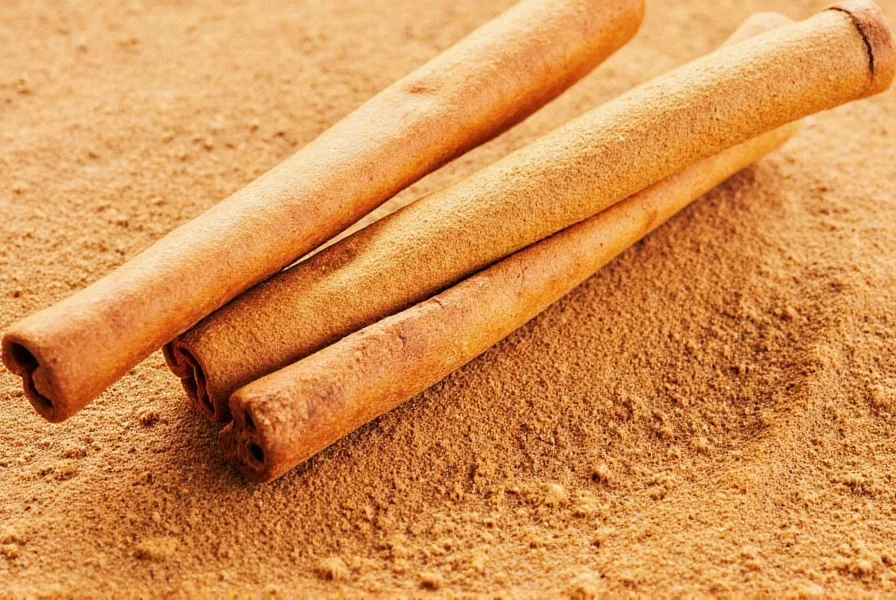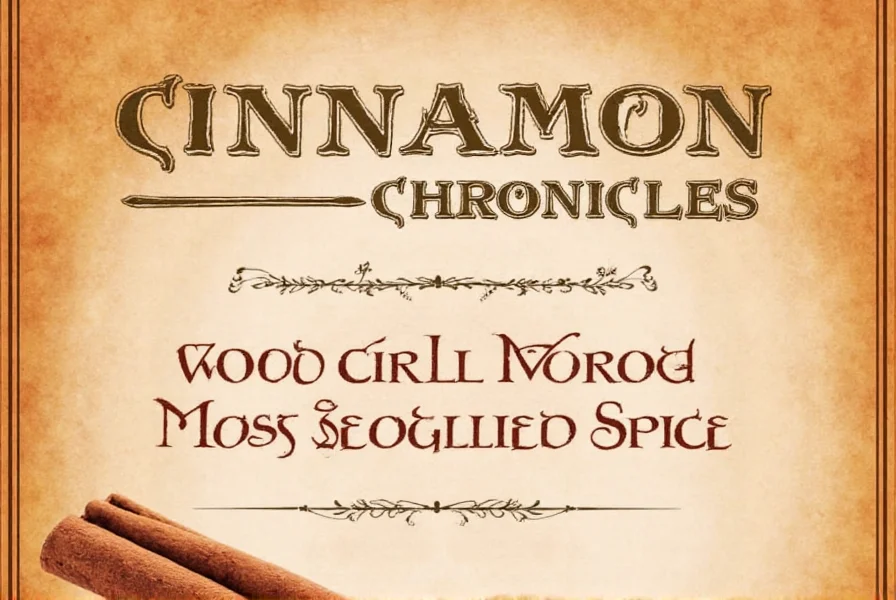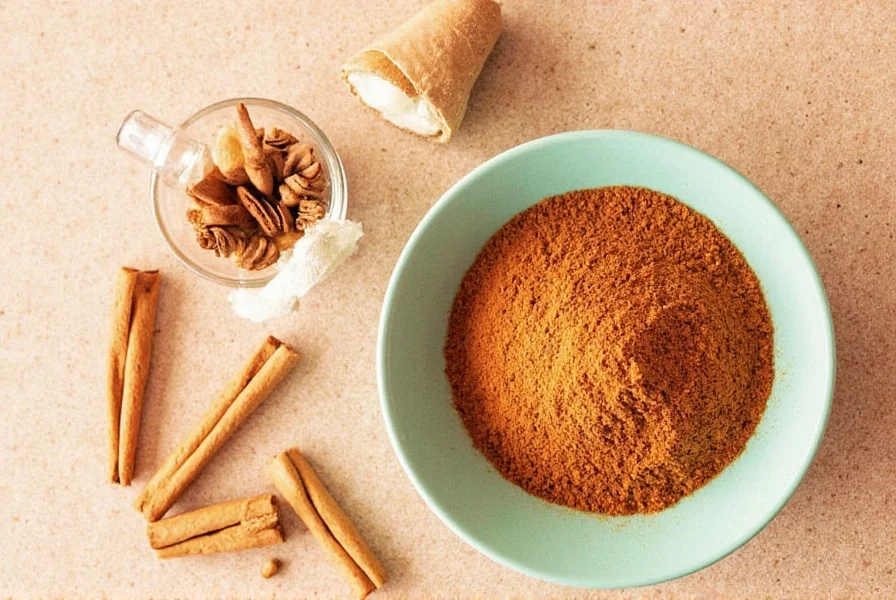| Feature | Cassia Cinnamon | Ceylon Cinnamon |
|---|---|---|
| Origin | China, Indonesia, Vietnam | Sri Lanka (formerly Ceylon) |
| Bark Appearance | Thick, hard, single-layered | Thin, brittle, multi-layered |
| Color | Dark reddish-brown | Light tan to pale gold |
| Flavor | Strong, spicy, sweet | Mild, sweet, citrusy |
| Cost | Inexpensive | More expensive |
| Coumarin Content | High (up to 6.97 mg per gram; exceeds EFSA daily limit for regular consumption) | Very low (0.017 mg per gram; safe for daily use) |
Introduction
Cassia cinnamon (commonly sold as "cinnamon") contains high levels of coumarin, a compound linked to liver damage when consumed in large amounts. Ceylon cinnamon, often called "true cinnamon," has significantly lower coumarin levels and is safer for regular consumption. This guide explains the key differences, health implications, and how to choose the right cinnamon for your needs based on authoritative sources including the European Food Safety Authority (EFSA) and FDA guidelines.

What Is Cassia Cinnamon?
When most people say "cinnamon," they refer to Cassia cinnamon, derived from Cinnamomum cassia trees grown primarily in China, Indonesia, and Vietnam. It is the most common variety in grocery stores but carries significant health considerations due to its coumarin content.
Key Features of Cassia Cinnamon:
- Thicker, harder bark
- Brownish-red color
- Strong, sweet-spicy aroma
- Inexpensive and widely available
- High coumarin content (up to 6.97 mg per gram)

What Is Ceylon Cinnamon?
Ceylon cinnamon (Cinnamomum verum) originates from Sri Lanka and is scientifically recognized as "true cinnamon." It is prized for its safety profile and delicate flavor, making it the preferred choice for regular consumption.
Key Features of Ceylon Cinnamon:
- Thin, papery bark
- Light tan to golden brown color
- Milder, sweeter, citrusy aroma
- Pricier than Cassia due to labor-intensive harvesting
- Negligible coumarin content (0.017 mg per gram)
Head-to-Head Comparison: Cassia vs Ceylon Cinnamon
Based on authoritative health and food safety guidelines, here's a detailed comparison of the two cinnamon types:
| Feature | Cassia Cinnamon | Ceylon Cinnamon |
|---|---|---|
| Origin | China, Indonesia, Vietnam | Sri Lanka (formerly Ceylon) |
| Bark Appearance | Thick, hard, single-layered | Thin, brittle, multi-layered |
| Color | Dark reddish-brown | Light tan to pale gold |
| Flavor | Strong, spicy, sweet | Mild, sweet, citrusy |
| Cost | Inexpensive | More expensive |
| Coumarin Content | High (up to 6.97 mg per gram; exceeds EFSA daily limit for regular consumption) | Very low (0.017 mg per gram; safe for daily use) |
Why It Matters: Culinary, Health & Safety
The choice between Cassia and Ceylon cinnamon significantly impacts your health and culinary outcomes. Health authorities like the EFSA and FDA emphasize coumarin safety due to its potential liver toxicity.
Culinary Considerations
- Cassia: Best for robust dishes like curries, stews, and spiced baked goods where intense flavor is desired. Use sparingly due to coumarin risks.
- Ceylon: Ideal for delicate recipes like custards, tea blends, and light pastries where subtle flavor is key. Safe for daily consumption in normal amounts.
Health Benefits & Safety Guidelines
Both types contain antioxidants and anti-inflammatory compounds, but coumarin levels determine safety:
- EFSA Recommendation: Tolerable daily intake of coumarin is 0.1 mg per kg body weight. For a 70kg person, this equals 7 mg daily.
- Cassia Risk: 1 teaspoon (2g) of Cassia contains up to 13.94 mg coumarin — exceeding the EFSA limit for most adults. Long-term consumption may cause liver damage.
- Ceylon Safety: 1 teaspoon (2g) contains only 0.034 mg coumarin — well below safety thresholds. Safe for regular use without dosage restrictions.
According to FDA guidelines, Cassia cinnamon products must include coumarin warnings for certain markets. Ceylon cinnamon is the only type recommended for daily use in therapeutic amounts.
Flavor Impact
Cassia delivers bold, spicy notes perfect for warming winter drinks. Ceylon offers nuanced sweetness that complements rather than overwhelms delicate dishes like milk-based desserts or fruit-based recipes.

Practical Tips for Using Each Type
For Cassia Cinnamon
- Use it in: Spiced chai, mulled wine, gingerbread, meat rubs, and Middle Eastern tagines — but limit to occasional use (1-2 times weekly).
- TIP: Always measure precisely; never exceed 1/4 teaspoon (0.5g) per serving for adults.
- Pairings: Chocolate, coffee, cardamom, nutmeg, orange zest.
For Ceylon Cinnamon
- Use it in: Béchamel sauces, rice pudding, hot milk with honey, light pastries, and smoothies — safe for daily consumption.
- TIP: Infuse whole sticks into syrups or creams for gentle flavor without overpowering other ingredients.
- Pairings: Lemon, vanilla, almond milk, apples, pears.
Buying Guide: Choosing the Right Stick for Your Kitchen
How to Spot Real Ceylon Cinnamon
- Look for thin, curled pieces that resemble parchment paper (multiple layers)
- Check labels for "Ceylon," "Cinnamomum verum," or "true cinnamon"
- Avoid products labeled simply as "cinnamon" unless specified as Cassia
- Price: Genuine Ceylon costs 2-3x more than Cassia due to production complexity
Top Brands & Products
Badger Spice Company – Organic Ceylon Cinnamon Sticks
Features: Fair-trade certified, organic, sustainably sourced from Sri Lanka with verified low coumarin levels.
Advantages: Third-party tested for safety, ideal for health-conscious consumers.
Best For: Daily use in tea, baking, and health-focused recipes.
Spicely Naturals – Ground Cassia Cinnamon
Features: Non-GMO, gluten-free, finely ground texture with coumarin content disclosed on packaging.
Advantages: Affordable option for occasional use; clearly labeled for informed decisions.
Best For: Holiday baking, savory dishes — use sparingly (max 1/4 tsp per serving).
Sri Lankan Traditional – Ceylon Cinnamon Sticks (2 oz)
Features: Artisanally hand-rolled, premium quality, independently tested for coumarin levels.
Advantages: Authentic Sri Lankan origin with traceable sourcing.
Best For: Gourmet cooking, daily wellness routines, and gift-giving.

Storage Tips
- Store both types in airtight containers away from heat and sunlight
- Whole sticks last longer than ground versions — up to 3-5 years for Ceylon
- Grind only what you need to preserve freshness and potency
Frequently Asked Questions
What's the main difference between cinnamon and Ceylon cinnamon?
"Cinnamon" sold in most stores is actually Cassia cinnamon (from China/Indonesia), while Ceylon cinnamon (Cinnamomum verum) is the "true" variety from Sri Lanka. Cassia contains high coumarin (up to 6.97 mg/g), posing liver risks with regular use, while Ceylon has negligible coumarin (0.017 mg/g) and is safe for daily consumption.
Is Ceylon cinnamon better than regular cinnamon?
For health and safety, yes — especially for regular consumption. The European Food Safety Authority (EFSA) and FDA confirm Cassia's coumarin levels exceed safe daily limits for most adults. Ceylon is the only type recommended for daily use in therapeutic amounts. Cassia is suitable for occasional use in bold recipes.
How can I tell Ceylon cinnamon from regular cinnamon?
Visually: Ceylon sticks are thin, fragile, and layered like parchment paper with light tan color. Cassia sticks are thick, hard, single-layered with dark reddish-brown color. Ceylon has a delicate, sweet aroma while Cassia is intensely spicy. Check labels for "Ceylon" or "Cinnamomum verum" — never trust "cinnamon" alone.
Which cinnamon is healthier?
Ceylon cinnamon is healthier for regular consumption due to its negligible coumarin content. Cassia contains 400-600x more coumarin than Ceylon. The EFSA states Cassia consumption exceeding 0.1 mg/kg body weight daily may cause liver damage. For daily use, Ceylon is the only safe option.
Can I substitute Ceylon cinnamon for regular cinnamon in recipes?
Yes, but with adjustments. Ceylon has 50-75% less flavor intensity than Cassia. For delicate recipes (custards, teas), use 1:1 substitution. For bold dishes (gingerbread, chai), increase Ceylon by 1.5x. Never substitute Cassia for Ceylon in daily wellness routines due to coumarin risks.
Why is Ceylon cinnamon more expensive?
Ceylon requires hand-harvesting of thin bark from specific Sri Lankan trees, with lower yields per tree. Production is 3-5x more labor-intensive than Cassia. The higher price reflects verified safety standards and sustainable farming practices.
How much cinnamon is safe to consume daily?
For Cassia: Max 1/4 teaspoon (0.5g) per serving for adults (due to coumarin limits). For Ceylon: No established limit; safe for normal culinary use (1-2 tsp daily). The EFSA recommends 0.1 mg coumarin per kg body weight daily — Cassia easily exceeds this, while Ceylon remains well below.
Is Ceylon cinnamon the same as "true cinnamon"?
Yes. "True cinnamon" is the scientific name Cinnamomum verum, native to Sri Lanka. The term distinguishes it from Cassia (Cinnamomum cassia), which is commonly mislabeled as "cinnamon" in grocery stores despite being a different species with higher health risks.
Conclusion
Choosing between Cassia and Ceylon cinnamon isn't just about flavor — it's a critical health decision. Cassia's high coumarin content poses liver risks with regular use, while Ceylon's negligible coumarin makes it the only safe choice for daily consumption. Always check labels for "Ceylon" or "Cinnamomum verum," and prioritize third-party tested products. For culinary versatility and safety, Ceylon cinnamon is the scientifically supported choice for modern kitchens.










 浙公网安备
33010002000092号
浙公网安备
33010002000092号 浙B2-20120091-4
浙B2-20120091-4